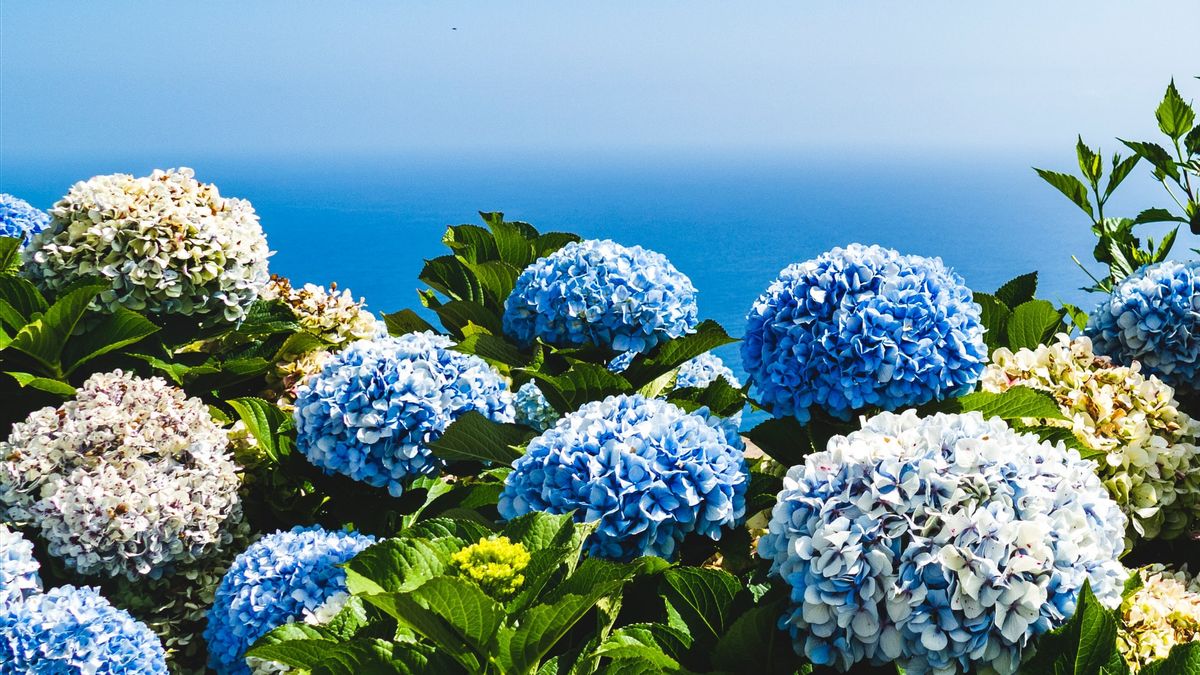YOGYAKARTA – Bokor flowers or popularly known as hydrangeas have unique characteristics. How not, the leaves are poisonous but the beauty of the flowers can be changed by measuring the acidity of the soil. So what else is interesting and how to care for hydrangea or hydrangea flower plants?
Hortensia has a family name Hydrangeaceae which includes 900 plants with 20 different species and 200 different cultivars. The most common species decorating home gardens is the Bigleaf Hydrangea or Hydrangea macrophylla.
Hydrangea flowers do not always produce seeds. For the most part, the petals fall off during pollination and then produce seeds. The color of the flowers varies, depending on the amount of aluminum in the soil. Generally red, purple, or pink. Well, the amount of aluminum in the soil is determined by the acidity of the soil.
Most varieties of hydrangeas come from Asia. While some species come from North America. Here's an easy way to care for hydrangeas in the home page.
1. Thrives in soil with balanced moisture
Most hydrangeas thrive in soil that has been added to compost to enrich the growing medium's nutrients. Generally, this plant likes partial sun and avoids the heat of the afternoon. But some varieties can still tolerate full sun.

2. Watered enough water
Hortensia absorbs more water. So, it needs to be watered enough but not too wet or too dry. At least, when the first one to two years, it needs more water. Citing the Almanac page, watering hydrangeas should ideally be three times a week.
3. Fertilized three times a year
Hydrangea plants with larger leaves need to be fertilized at least in March, May, and June. While panicle hydrangea is enough to be fertilized twice a year. Precisely in April and June.
4. Protection in low humidity seasons
Several ingredients can help maintain the balance of the hydrangea growing medium. Such as mulch bark, leaves, pine leaves, or straw. You can cover the entire soil surface with one of these materials.
5. How to change the color of the hydrangea flower
Hydrangea plants can be considered unique. The reason, the leaves are classified as poisonous, but some ancient Buddhist-based medicine uses the roots for medicine. However, the criteria used for treatment are not yet known. So, avoid this plant being eaten by pets or children when playing.
Hydrangea flower color can be changed by adjusting the acidity of the soil. Although it can't be done instantly, or it takes some time, even months. Flower color can be adjusted after they are 2 years old.
VOIR éGALEMENT:
It's easier to turn blue flowers into pink than pink to blue. Hydrangea broadleaf, can change based on soil pH. Ideally, acidic soil with a pH of less than 5.5 produces blue flowers. While Ph 6.0 produces pink flowers. For white color, it is not affected by the level of soil moisture. If you want purple hydrangeas, you can adjust the pH of the growing media with a pH of 5.5 to 6.5.
Changing the pH of the soil can also be used by using leftover drink ingredients in the kitchen. One of them is coffee, as reported by Garden Design, some gardeners have reported the success of turning hydrangeas blue by adding coffee grounds to the growing medium. Coffee grounds can make the soil more acidic and allow this plant that symbolizes love to absorb aluminum more easily.
On the other hand, if you want to change the color from blue to pink, you can add eggshells. Eggshell is useful to reduce soil acidity so it is more difficult to absorb aluminum.
The English, Chinese, Japanese, Arabic, and French versions are automatically generated by the AI. So there may still be inaccuracies in translating, please always see Indonesian as our main language. (system supported by DigitalSiber.id)













